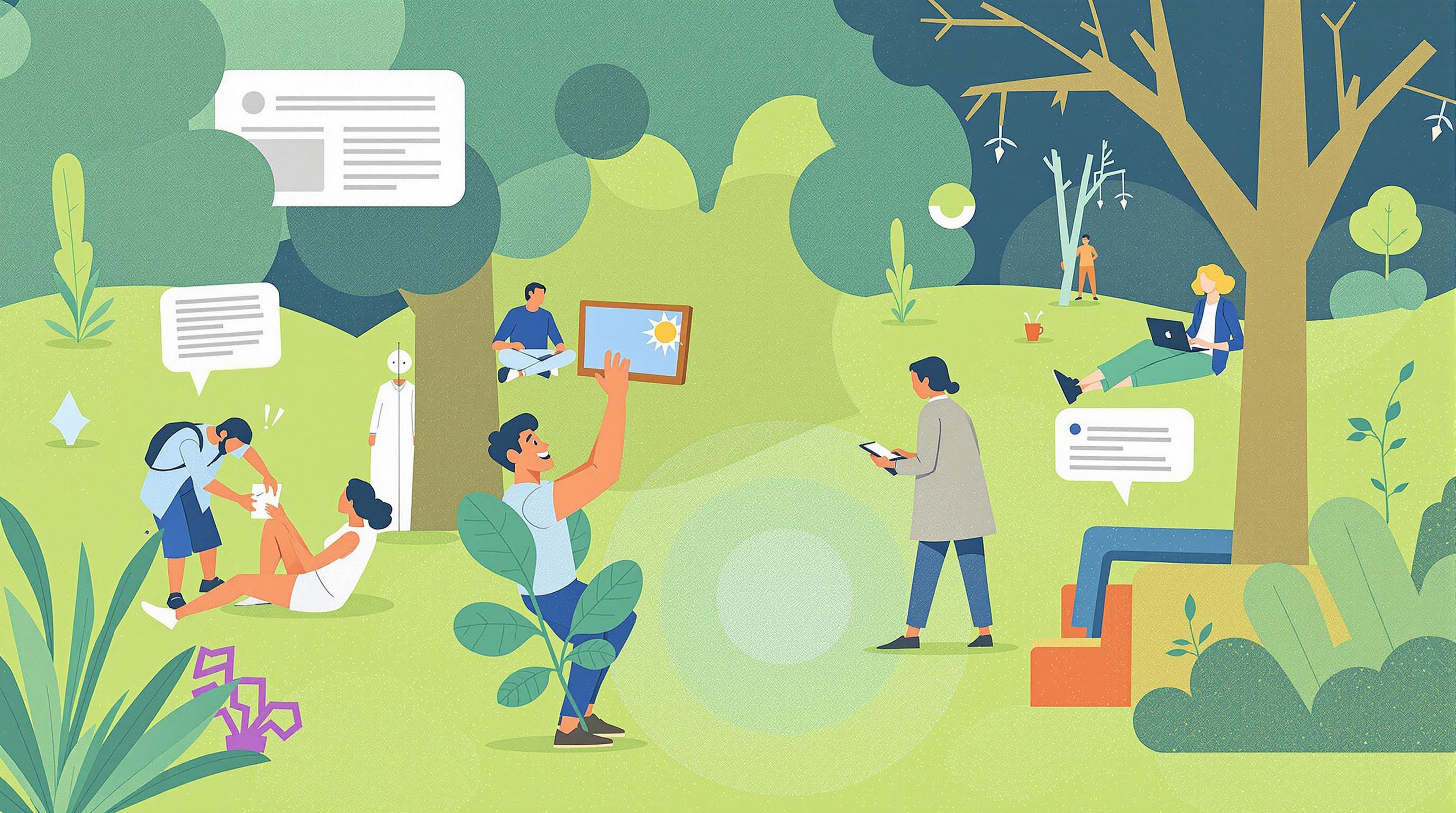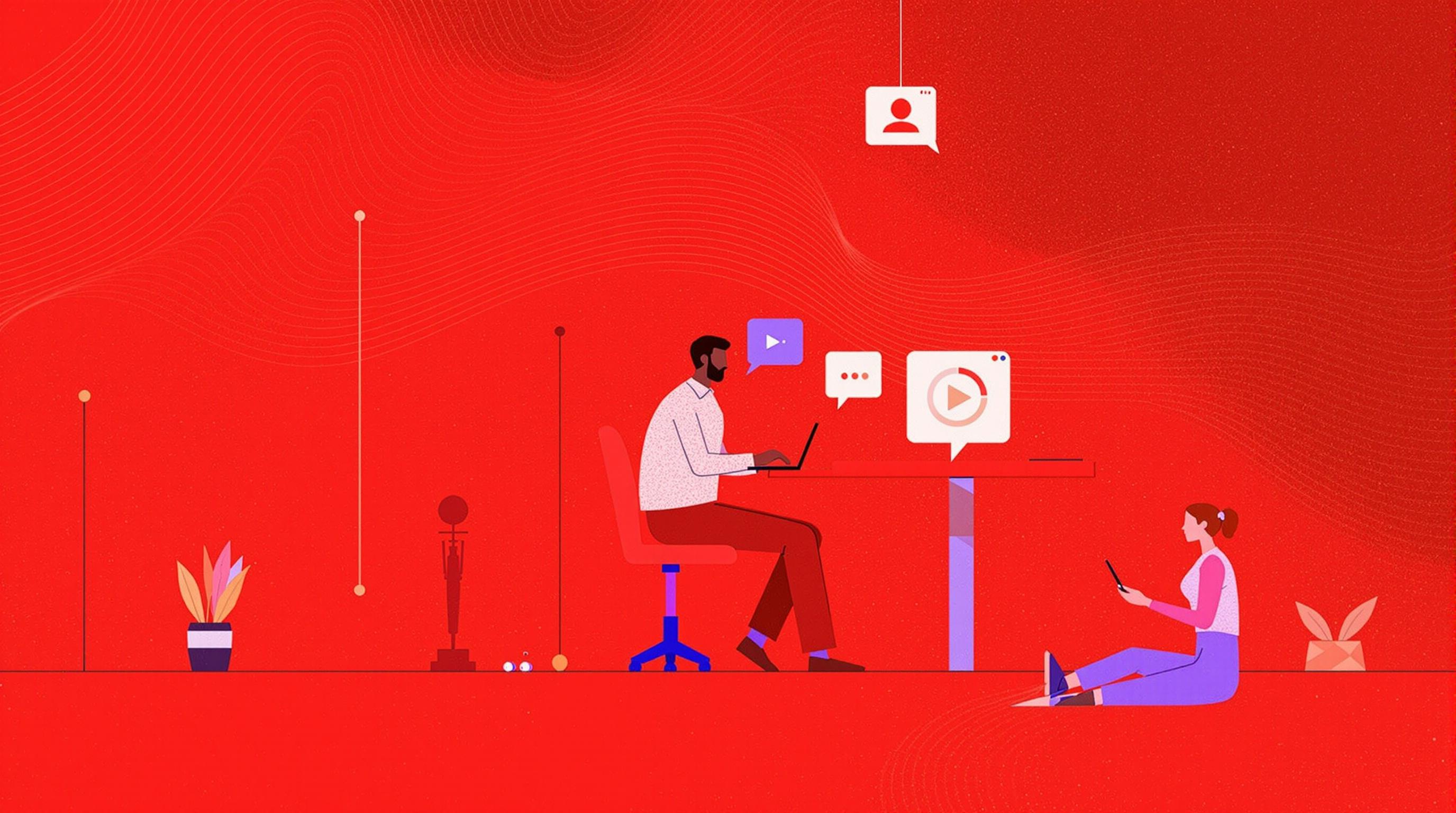Related Articles
- Navigating the Talent Labyrinth: How Emotional Intelligence Is Shaping New Hiring Practices in Unseen Markets
- Behind the Scenes: How Automating HR Processes Is Redefining the Future of Recruitment and Job-Seeking Strategies
- Beneath the Surface: Unveiling the Surprising Role of Environmental Sustainability in Shaping Future Careers
- Exploring the Quirky Side of Remote Work: How Hobbies Are Fueling Professional Success in Unexpected Ways
- How the Remote Revolution is Inspiring Unlikely Friendships Across Continents: A Study of Global Connectedness
- The Unforeseen Bond: How Virtual Coworking Spaces Foster Unexpected Connections Amidst Remote Work
8 Unexpected Remote Work Paradigms: Insights on How Work-Life Integration is Redefining Employee Wellness in 2024
8 Unexpected Remote Work Paradigms: Insights on How Work-Life Integration is Redefining Employee Wellness in 2024
8 Unexpected Remote Work Paradigms: Insights on How Work-Life Integration is Redefining Employee Wellness in 2024
Introduction
As 2024 unfolds, remote work has transformed from an emergency solution during the pandemic to a standard operational model for many organizations. This shift has necessitated a reevaluation of traditional work environments and employee wellness strategies. Businesses are now prioritizing the integration of work and life, leading to innovative paradigms that redefine how employees engage with their work and personal lives.
The concept of work-life integration differs fundamentally from work-life balance, suggesting a seamless intertwining of professional responsibilities and personal endeavors. This approach has gained traction as employees seek greater autonomy and flexibility in managing their time. As companies adapt, understanding these new paradigms is crucial for fostering employee well-being and productivity.
This article explores eight unexpected remote work paradigms that have emerged in 2024, shedding light on how they contribute to employee wellness and satisfaction in this new landscape. By examining these insights, organizations can better support their workforce, cultivate engagement, and enhance overall job satisfaction.
1. Flexible Work Hours
One of the most notable changes in remote work has been the move towards flexible work hours. Employees now have more control over when they complete their tasks, allowing them to work during hours that align with their personal peak productivity times. According to a study by Slack (2023), nearly 70% of employees report increased productivity when allowed to choose their work hours.
This flexibility not only helps accommodate different time zones but also empowers employees to manage personal commitments, such as childcare or health appointments, without compromising work obligations. Employers who support flexible schedules often see higher employee retention rates as well as reduced burnout.
As the standard 9-to-5 model fades, organizations that prioritize flexible working conditions position themselves as attractive places to work, enhancing their employer brand in a competitive job market.
2. Hybrid Collaboration Spaces
In 2024, companies are increasingly investing in hybrid collaboration spaces that blend physical and virtual environments. These spaces are designed to facilitate team interactions, whether employees are working onsite or remotely. According to a report from Deloitte (2023), 85% of organizations now feature designated areas that enhance virtual collaboration through advanced technology.
By merging the benefits of in-person and remote work, organizations can foster a sense of belonging and community. This synergy is crucial for cultivating creativity and innovation, as teams share ideas and collaborate more seamlessly across different settings.
These hybrid spaces also prioritize employee well-being, providing access to quiet areas for focus and informal settings for relaxation and social interaction. Striking this balance is key to maintaining employee morale and productivity in a hybrid workspace.
3. Wellness Integration Programs
To support employee wellness, many organizations are launching wellness integration programs that combine health initiatives with work tasks. These programs often include elements such as virtual fitness classes, mental health workshops, and mindfulness training, all designed to promote well-being during work hours.
A survey by Gallup (2023) highlighted that companies with wellness programs see a 20% decrease in absenteeism. This statistic underscores the positive impact of integrating wellness within the workday, improving both productivity and employee engagement.
By embedding wellness into the daily workflow, employers not only enhance their employees' physical and mental health but also foster a culture of care that can significantly enhance productivity and job satisfaction.
4. Results-Oriented Work Environments (ROWE)
2024 has seen a shift towards Results-Oriented Work Environments (ROWE), where employees are evaluated based on the results of their work rather than the hours they clock. This paradigm encourages accountability and motivation, allowing individuals to manage their time freely while still meeting organizational goals.
As firms embrace ROWE, employees avoid micromanagement and focus on delivering high-quality work. According to a Harvard Business Review study (2023), companies implementing ROWE reported a 30% increase in employee performance and satisfaction.
This approach allows for more personalized work experiences, as employees can tailor their work rhythms and environments to their preferences, ultimately contributing to higher job satisfaction.
5. Technology-Enhanced Personalization
The rise of AI and machine learning has enabled organizations to craft highly personalized work experiences for employees. In 2024, tech solutions are being integrated to support individual preferences, from task reminders to tailored professional development resources.
Leveraging technology in this way allows for a more customized approach to employee engagement, making it feel more personal and tuned to each individual's needs. Research from Gartner (2023) indicates that 73% of employees value companies that offer tools for enhancing personal productivity.
This emphasis on personalization not only helps employees feel valued but also enhances their overall work experience, reinforcing their commitment to the organization.
6. Emphasis on Mental Health Days
As mental health awareness grows, organizations are placing a greater emphasis on mental health days as a critical aspect of employee wellness. Many companies are now offering designated days off specifically for mental wellness, acknowledging the importance of mental health in maintaining work performance.
A 2023 study found that employees who took dedicated mental health days reported a significant decrease in stress and an increase in resilience. By validating the importance of mental health alongside physical health, organizations are fostering an environment of care and support.
As the stigma around mental health fades, companies that prioritize the mental wellness of their employees can attract top talent and nurture a positive, sustainable workplace culture.
7. Community Engagement Initiatives
In 2024, many organizations are recognizing the value of community engagement as a component of employee wellness. By encouraging employees to participate in community service or volunteering initiatives, companies enhance connectivity between their workforce and the communities they serve.
Engaging in community-focused projects can boost employee morale, increase job satisfaction, and foster a sense of purpose. A study by the Points of Light Foundation (2023) found that organizations that promote community engagement experience a 25% increase in employee happiness.
Such initiatives not only contribute positively to society but also enhance team bonding and cohesion, resulting in a more harmonious workplace environment.
8. Continuous Learning Opportunities
To thrive in an ever-changing work landscape, continuous learning has emerged as a significant priority in remote work paradigms. Organizations in 2024 are investing in employee development through ongoing training, workshops, and accessible online courses.
According to LinkedIn's Workplace Learning Report (2023), companies that prioritize continuous learning see an overall increase in employee engagement and retention. Employees appreciate opportunities to grow their skills, leading to a more motivated workforce.
By cultivating a culture of lifelong learning, organizations not only equip their employees for future challenges but also foster loyalty and commitment, contributing to long-term success.
Conclusion
The paradigm shifts in remote work that have emerged in 2024 offer profound implications for employee wellness. By understanding and embracing these unexpected changes, organizations can better meet the needs of their workforce, fostering an environment that prioritizes well-being, satisfaction, and productivity.
The shift towards flexibility, innovative collaboration spaces, integrated wellness programs, and a focus on continuous learning showcases the evolving nature of work in a post-pandemic world. As organizations adopt these approaches, they are not just adapting to new work models but are also setting the stage for a healthier and more engaged future workforce.
Ultimately, prioritizing work-life integration in these diverse paradigms can redefine the employee experience, leading to sustainable success and a vibrant workplace culture.




